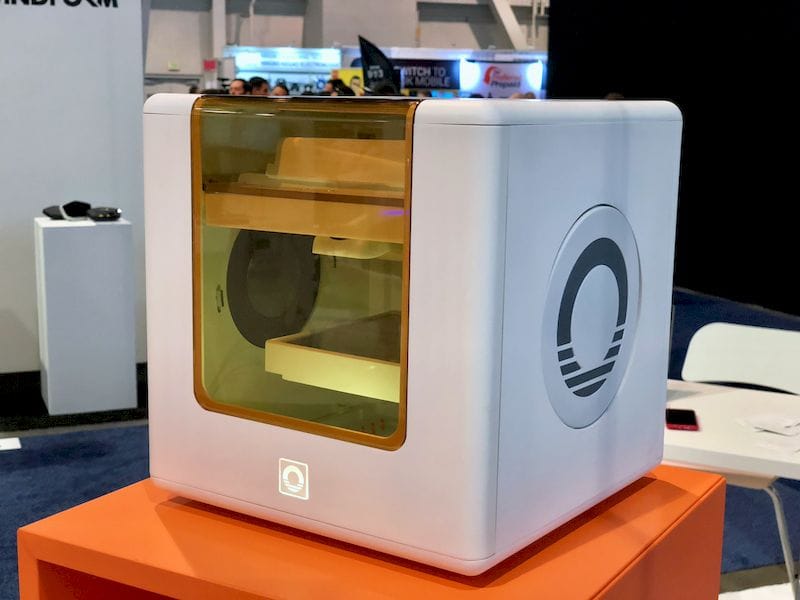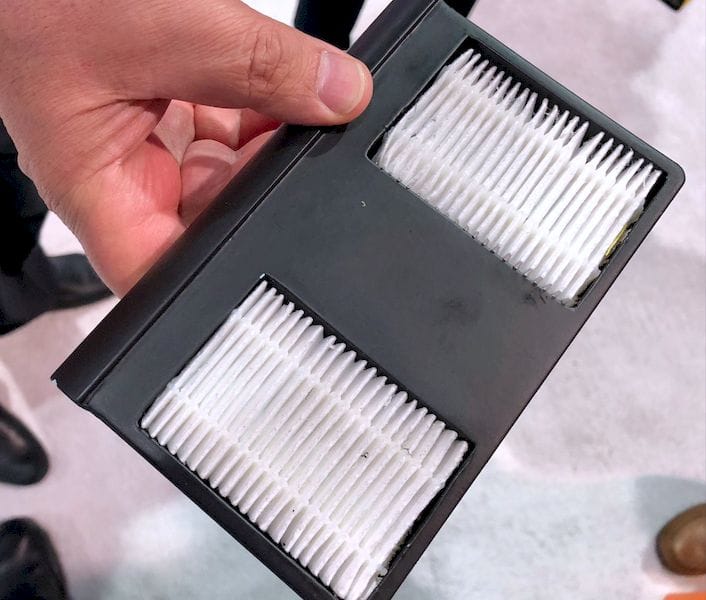
We had a close look at the new CubiBot desktop 3D printer.
This is a very inexpensive device designed by a family business based in San Diego, and built in China. The company used to develop products on 3D printers, but eventually decided they could build one on their own that would be better than what they had been using. After 3-4 years of development, they’ve arrived with the CubiBot.
Their goal is to provide a low cost, quality desktop 3D printer for hobbyists, educators and any others seeking 3D printing capabilities in that price range.
How inexpensive is this small device? It’s priced at only USD$349, although is their launch price on Indiegogo, with an intended final retail price of USD$499.
The CubiBot falls into the “mini” category that is often an afterthought by other 3D printer manufacturers who otherwise focus on larger volume equipment. But CubiBot is available only in the mini form factor, as the company is dedicated to that market.

By “mini”, I mean there are two overall features that dominate the device: it’s small build volume (only 127 x 127 x 127mm) and it’s exterior dimensions (only 254 x 254 x 254mm). This makes the device quite portable, although you have to worry about the power cord, obviously. I must say that this is one of the best “internal to external volume” ratio machines on the market today.
Most inexpensive desktop 3D printers are fairly stripped down in features, but this does not seem to be the case with the CubiBot. Some of its unusual features include:
- The ability to 3D print multiple materials due to its heated print surface, which can actually hit 100C. This enables the printing of ABS and other more exotic materials.
- An enclosed chamber captures heat and encourages higher quality results.
- The CubiBot includes a filtrations system that is made from HEPA and activated carbon, which should eliminate any annoying fumes generated during 3D printing, especially from ABS material.
- CubiBot includes a fully automated leveling process to avoid manual calibration and increase print reliability.
- A comprehensive cloud system leverages the onboard WiFi connection, a cloud slicing system and a mobile app for remote operations and monitoring. Of course, you’ll still have to unload prints and replace materials manually.
- There’s an option to order the machine in several different colors and even change the circular logo’s color, which appears on the side of the machine.

The machine is not perfect, of course. Everything can be improved. I might have liked to see a locking door mechanism that would make the machine fit better into an educational environment; you don’t want kids touching a 100C printer bed, do you?
But the balance of features does suggest this is a good option for those seeking a low cost machine. Evidently the public agreed strongly with this notion, as thousands were ordered through their launch campaigns so far, raising hundreds of thousands of dollars for the company.
One thing I do not know much about is the manufacturing capability of the company, which can often be the downfall of 3D printer startups. However, I do know that the company has a long history of product development, so it’s likely they know something about how to go about executing their plan.
Via CubiBot

